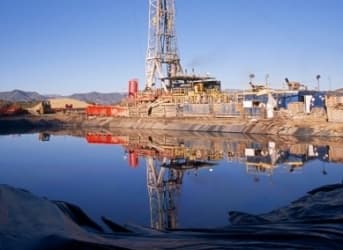As the world heads towards the start of the winter fuel oil season, crude prices still show little sign of a sustained upward move. Instead, oil seems to be trapped in a new “normal” range of around $40 to $55 a barrel. Shale oil producers have done a remarkable job in adjusting to that change in the environment, but it remains to be seen what the eventual damage to companies in the sector will be once the last crude hedges from the pre-collapse period finally settle in 2016.
With that uncertainty just around the corner, it is little wonder that financing has proven challenging for many shale firms. What might be more surprising though is where the financing that is available is actually coming from. Unlike in the past, many shale firms are having great difficulty tapping financing from either banks or public equity markets. Instead shale firms are turning to private equity firms and other unconventional sources of financing. In a report earlier this year, Reuters noted that there was $44 billion in high yield debt and share sales for the first half of 2015. That issuance though has increasingly become unfeasible as the much hoped-for fast rebound in oil prices has failed to materialize. Related: U.S. Shale Drillers Running Out Of Options, Fast
This lack of funding has created opportunities for patient and deep pocketed private equity firms. Asset sales, M&A deals, and bankruptcies have all been relatively limited thus far in the oil price fiasco in part because many firms had strong hedge positions, committed bank revolvers, and perhaps most importantly, because the spread between bid and ask prices on assets was wide.
While many shale firms have stuck to their view of asset valuations based on historical BOE prices of the last few years, buyers have been unwilling to value assets at much more than spot prices. Careful private equity firms have been among the most prudent bidders. As Bill Conway, co-CEO of The Carlyle Group, a giant in alternative funding, noted in the group's second quarter results earlier this year, "I would say, this is a good time to be careful when it comes to investing in energy." Related: Is Russia The King Of Arctic Oil By Default?
Existing financing options for many shale firms only go so far though, and those lifelines are fast running out. The need for cash should push E&P firms to become more flexible on deal terms and will likely lead to a rash of defaults as time goes on. As of September, S&P noted 16 U.S. oil company defaults for 2015, with the largest of these being Samson Resources. Samson was particularly vulnerable since it had been bought by a consortium of KKR and other investors in 2011 and lacked the balance sheet strength of many of its peers. Related: Stop Blaming OPEC For Low Prices
Redeterminations by banks starting a few weeks ago at the beginning of October could have pushed many firms into distress, but thus far, there has been little evidence of that, suggesting that banks are going easy on shale firms hoping that a patient approach will yield better recovery rates than aggressively targeting firms for debt repayment. That approach is sensible given that many banks are only just recovering from the real estate crisis and cleaning up their balance sheets, and few have much of an appetite to take on a new slew of messy assets like oil businesses.
Ultimately what is needed for the price of oil to recover is a new sense of discipline regarding production and the balance of supply and demand across the industry. That has not happened yet, and the availability of financing is prolonging the crisis. Nonetheless, there are definitely signs that financing has become much tighter and this should continue for the foreseeable future until prices finally show sustained signs of upward momentum.
By Michael McDonald of Oilprice.com
ADVERTISEMENT
More Top Reads From Oilprice.com:
- U.S. Oil Imports On The Rise Once More
- Is This The Last Roll Of The Dice For The Offshore Sector?
- The Stock That Keeps Going Up As Gas Price’s Fall


















